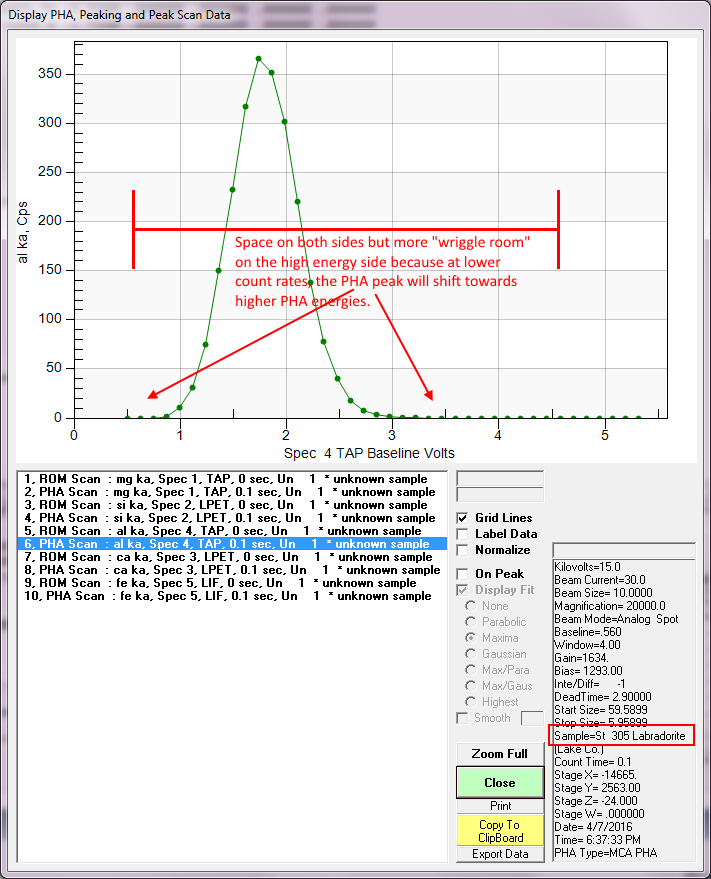I have heard that the PHA peak will shift depending on whether the concentration of the element is low or high in the material being measured, which I assume means that the PHA peak position is dependent on count rates. The first question is, why?
Hi Karen,
I don't claim any particular expertise on these questions but my understanding is that it is due to the frequency of incoming photons and the high voltage bias of the proportional detector.
That is, each time a photon enters the proportional detector it creates an ionization trail and that causes the high voltage bias on the detector to discharge. This is the signal that is then processed by the preamp and then counted.
However, at very high count rates, the detector doesn't have quite enough time to re-charge back to full bias voltage before the next photon enters and causes another discharge cycle.
This discharge before fully charged is what (I believe) we observe as a shift towards lowers PHA voltages when at high count rates.
The second question is, how much, if at all, do you need to adjust the PHA position on your standard (which should have high count rates) when your unknown is a trace element (which should have low count rates)?
This is a more difficult question because- it depends. Here is a schematic (from my Sx100), which attempts to answer your question:

Basically you want to leave more room to the right (high energy side) because at lower count rates your PHA peak will shift to slightly higher energies. I'm working at PS today, but maybe someone in their lab has a plot of a PHA scan at a high count rate on a standard, and another PHA scan at a low count rate on a lower concentration material... or maybe I should add code to my WDS simulation to shift the PHA peak depending on the count rate? I know, I'm getting a little obsessed with this EPMA simulation mode!

john